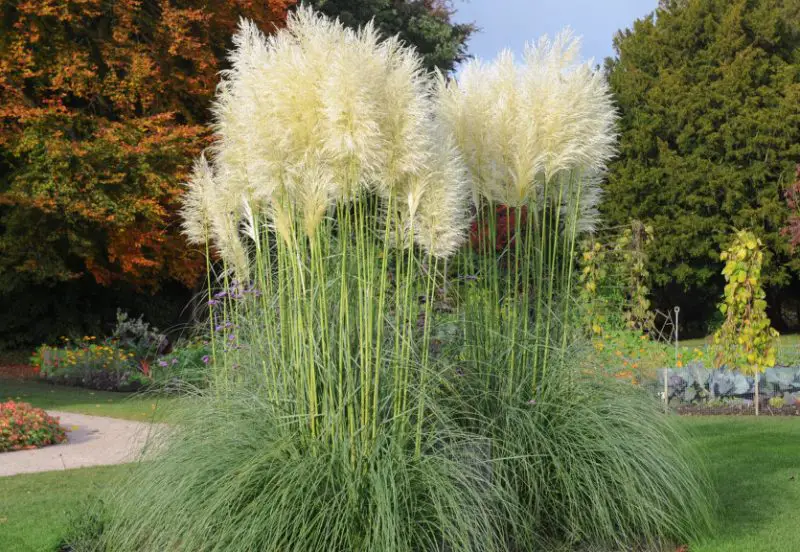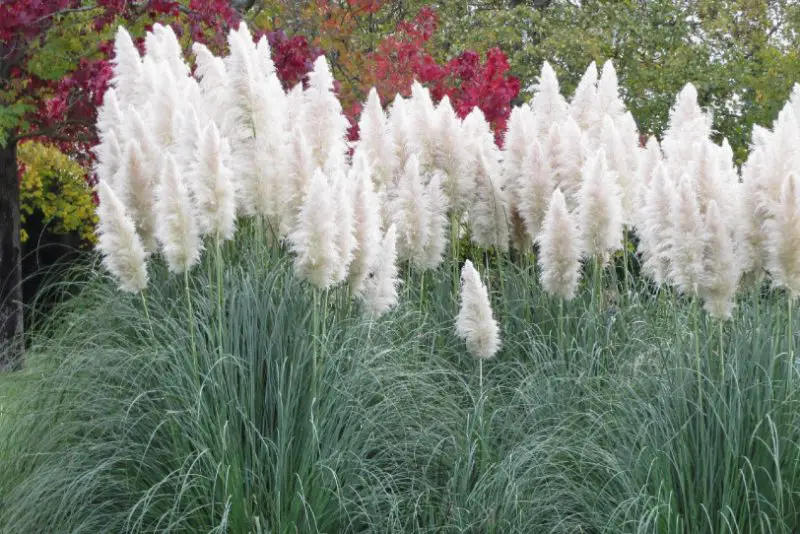White pampas grass, with its striking plumes and graceful demeanor, adds a touch of elegance to any landscape. As a popular choice among gardeners for its ornamental value, white pampas grass (Cortaderia selloana) holds a special place in garden designs worldwide.
However, to truly appreciate and cultivate this stunning plant, one must delve into the intricacies of its care and maintenance. In this comprehensive guide, we will explore all aspects of caring for white pampas grass, from planting and propagation to pruning and troubleshooting common issues.
Whether you’re a seasoned gardener looking to enhance your outdoor space or a novice enthusiast seeking to cultivate a thriving garden, this guide will equip you with the knowledge and expertise needed to nurture and enjoy the beauty of white pampas grass to its fullest potential.
About White Pampas Grass

White pampas grass, scientifically known as Cortaderia selloana, is a perennial plant belonging to the Poaceae family. Its common name, “pampas grass,” evokes images of vast, open landscapes where this striking plant is often found. With its impressive stature, white pampas grass can reach heights of 5 to 10 feet tall and spread outwards to the same width, making it a commanding presence in any garden or landscape.
This resilient plant thrives in various sunlight conditions, ranging from full sun to partial shade, making it adaptable to different environments. When it comes to soil preferences, white pampas grass prefers loamy soil that is moist but well-drained. It can tolerate acidic to neutral soil pH levels,
One of the most notable features of white pampas grass is its stunning bloom time, which occurs during the summer and extends into the fall season. The fluffy plumes of flowers emerge in shades of pink, yellow, and, as the name suggests, white, adding a touch of elegance and softness to the landscape.
In terms of hardiness, white pampas grass is suited for USDA hardiness zones 7 to 10, primarily found in regions with milder climates. Originating from South America, it has adapted well to various climates and is often cultivated for its ornamental value in gardens worldwide.
Overall, white pampas grass is a beautiful and adaptable perennial plant that adds height, texture, and visual interest to any garden or landscape. With its graceful plumes and easy-to-care-for nature, it is a favorite among gardeners looking to make a bold statement in their outdoor spaces.
Caring Guide for White Pampas Grass
Proper care is essential for maintaining the beauty and health of white pampas grass in your garden. Here is a simple guide to ensure your pampas grass thrives:
Sunlight and Soil
For optimal growth and health, it’s crucial to consider sunlight and soil conditions when planting white pampas grass. Choose a location in your garden that receives full sun to partial sun exposure, as this ensures the plant receives the necessary light for photosynthesis and robust growth. Additionally, ensure the soil is well-draining to prevent waterlogging, which can lead to root rot and other issues.
Watering
Watering is a critical aspect of caring for white pampas grass. After planting, it’s important to water newly planted white pampas grass deeply to aid in the establishment of their root system. However, once the plants are established, they can largely rely on natural rainfall for hydration. It’s crucial to strike a balance with watering, as overwatering can lead to root rot and other issues.
Pruning
Pruning is an essential task for maintaining the health and vigor of white pampas grass. It’s recommended to perform pruning in late winter or early spring by cutting back the grass to the ground level. This practice helps rejuvenate the plant by removing old and dead growth, stimulating new growth for the upcoming growing season. When pruning, it’s important to use sharp and clean tools to prevent damage to the plant.
Safety Precautions
It’s crucial to observe safety precautions when growing white pampas grass. Due to its highly flammable nature, it’s important to keep it away from structures, outdoor cooking areas, or open flames. This preventive measure significantly reduces the risk of accidental fires and helps ensure the safety of your outdoor space.
Propagating White Pampas Grass
Propagating white pampas grass can be achieved through a simple and effective method known as division, typically performed in the spring. This process involves dividing pruned clumps of the grass using a shovel and then replanting them in desired locations. It’s important to note that only female plants are typically propagated.
White pampas grass exhibits separate male and female plants, with females being the predominant variety grown due to their showier appearance. Female plants boast fuller plumes composed of silk-like hairs, whereas male plants lack these distinctive features.
How to Grow White Pampas Grass From Seed
Growing white pampas grass from seed offers a cost-effective way to expand your garden, although it comes with some considerations. While easily grown from seeds, the results may not always meet expectations, often yielding a higher proportion of male grass rather than the preferred female plumes. To begin, harvest seeds from mature plants during late summer or early fall when they’re visible on the fluffy plumes. Recognize them by their dark brown to black, narrow, long, and pointy appearance, with female plumes typically containing more seeds.
Once harvested, follow these steps:
- Prepare Soil: Lightly cover the seeds with well-draining, nutrient-rich soil in pots or trays.
- Provide Protection: To create a conducive environment for germination, cover the pots with plastic bags or plastic domes, helping to retain moisture and warmth.
- Ensure Adequate Lighting: Place the pots in an area with bright, indirect light, which is crucial for healthy seedling growth.
- Monitor Germination: With proper care, germination should occur in about three weeks. Keep the soil consistently moist but not waterlogged during this period.
- Transplant Seedlings: Once the seedlings have reached a size where they can be handled comfortably, transplant them into larger pots to provide ample space for root development.
- Prepare for outdoor planting: As the seedlings grow and start to take on a bushy appearance, they’re ready for outdoor planting. Wait until all threats of frost have passed before transplanting them into your garden.
Common Problems With White Pampas Grass

While white pampas grass is generally a hardy and low-maintenance plant, it may encounter some common problems that gardeners should be aware of. One significant issue is its highly flammable nature, especially when the grass dries out or dies. This poses a fire hazard, particularly if the plant is located near buildings, outdoor cooking areas, or open flames. To mitigate this risk, it’s essential to plant pampas grass in areas where fire hazards can be minimized.
Another concern with white pampas grass is the sharpness of its leaf blades. These blades can be razor-sharp, posing a risk of injury when handling the plant during cutting or pruning. It’s advisable to wear protective gloves and clothing when working with pampas grass to avoid cuts or scratches.
Additionally, pampas grass can attract small critters such as snakes, particularly when left untrimmed and untamed. This may be a concern for those who have young children or pets playing in the garden. Regular maintenance and trimming can help mitigate this issue by reducing potential hiding spots for critters.
Finally, neglecting to trim or clean out the center of a pampas grass stand annually can lead to issues such as rotting. Accumulated old foliage in the center may cause the plant to rot, resulting in a hole in the stand that is difficult to rectify. Regular maintenance and division are essential for preventing such problems and maintaining the health of white pampas grass stands. Overall, while white pampas grass is a beautiful and versatile plant, it’s important to be aware of these common problems and take appropriate measures to address them.






